Disclosure: Please note that some links are affiliate links, and at no additional cost to you, we earn a commission if you make a purchase.
If you would like to support this website in some way, using these links will help do exactly that.
**This post contains affiliate links and I will be compensated if you make a purchase after clicking on my links. This is at no additional cost to you.

This post is the third in a series of four. If you missed the first one, double-back here to get caught up. It's explains why I’m passionate about CreativeLive, and why I’m currently taking Ben Willmore’s Travel Photography: The Complete Guide class. The second in the series discusses Ben Willmore's sorting and processing style that will make going through your vacation photos a breeze. If you need to catch up on processing large amounts of photos, click to the second part here. I’m going to pick-up where I left off...
Dealing With Tourists
This subject grabbed my attention right away, and admittedly it was one of the first sessions I watched. Willmore presents some really great tips, all illustrated with examples from his own work. But, it gets even better, because included with the class purchase is a mobile-optimized, 35-page PDF guide, in a ‘done for you’ note-taking style with the photographic examples. It didn't take up that much space on my phone, and I've flipped through the pages like flash cards several times to refresh my memory. Old habits die hard!
Here are my four favorite tips that Willmore suggested for dealing with tourists:
1. Use the tourist to your advantage through their presence physically adding color or their placement in the composition.
2. Crouch down or move, solve your tourist-problem by getting physically flexible.
3. Compositing in Photoshop might be simpler for very popular spots, just keep your camera still and concentrate on where people move in order to be sure you have the entire scene necessary to successfully composite.
4. Patience. It’s hard when there are endless photo opportunities all around you, or if you have family members bored out their mind waiting for you to finish up. Sometimes, its worth it to be patient and wait out the crowd. If you do NOT have the time, see 1-3, knowing well that with #3, compositing in Photoshop, you’re going to be spending extra time editing. Is outlasting a crowd for five-ten minutes worth the time it would take to create the composite in Photoshop? You have to pick your battles.
Challenges in Shooting Architecture
One tricky topic Willmore brings up that I never noticed before, and now I can’t stop seeing, is distorted, small buildings. The fact that buildings are skewed/distorted with perspective I always assumed was out of my control. Not so! Apparently, its more the fact that personally as a short person I’ve been more likely to hold my camera at an angle to the straight angles of the buildings, where the distortion comes in. If I held the camera perpendicular to the buildings, the building lines would also be straight. This definitely poses a challenge for me as most of the buildings I enjoy shooting are much taller than I am, and the alleyways in Germany are so narrow its hard to back up far enough to keep the camera and the building perpendicular. Willmore offers a few solutions, one of which I’ve been working on implementing is trying to incorporate more than 1 side of the building. That way it doesn’t appear as though all of my buildings are falling backwards.
Willmore also explained the concept of ‘Visual Merging’, which is where objects in the foreground visually combines in your composition with your background. For me, this is another example of being mindful of the negative space objects create, but I hadn’t considered it in relation to travel photography. This trip, I’ve been consciously looking to see if foreground statues are separating enough from their backgrounds, and if they’re merging together I’ve tried Willmore’s suggestion of either shifting my position or switching my depth of field in order to solve the issue.
Local Subjects
My eyes sort of glazed over when Willmore discussed working with local subjects. For where I travel, predominantly Germany, local subjects are hard to come by, and even harder to become visually interesting as subject matter. Germans look and dress the same way, for the most part, as I do, and as I see in Florida every day. Even if you do see someone in traditional Bavarian clothing, chances are they’re not from Germany, but a visitor like myself. To be honest, I have a hard enough time getting my own family members to behave in front of the camera, going to a stranger to create a portrait isn’t in my realm of interest. It was interesting to hear how he (Ben Willmore) has an ongoing series with his wife doing yoga poses in various countries. Having a go-to concept for an ongoing series could be a solution for camera-shy family members.
While his tips were helpful, for me they weren't as easily applicable.
Coming Up Next
Part 4 will explore whether or not this class improved my travel photography and come out after my return from Germany in October! As I embark on this mini-series, please feel comfortable in providing feedback through the comments section below, or through email. I’d love to hear from you. Definitely let me know if you’re interested in this type of content.
Follow Along
If you enjoyed this article, or these topics sound interesting to you, you'll love our weekly newsletter. You'll receive a free Germany Packing list for signing up, and you'll receive each week's newest posts every Friday. Thank you for reading!
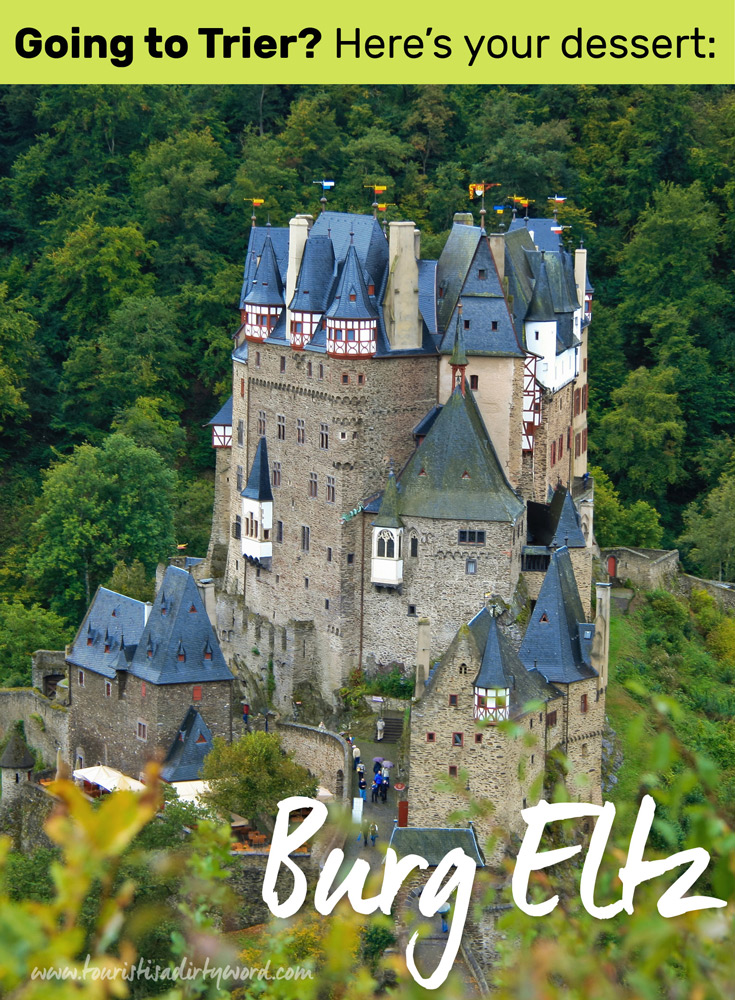
It was crisp, chilly fall day. Instead of rain, a misty cold spritz was falling from the sky, making the cobbled ramp down to the castle an adventure. I had a tight grip on Sebastian’s arm, and right as I felt my foot miss its next mark, he caught my arm up, nearly lost his balance himself, I caught him, and we proceeded to do our ‘stingray shuffle’, barely lifting our feet up at all, as we continued down the remaining part of the drive.
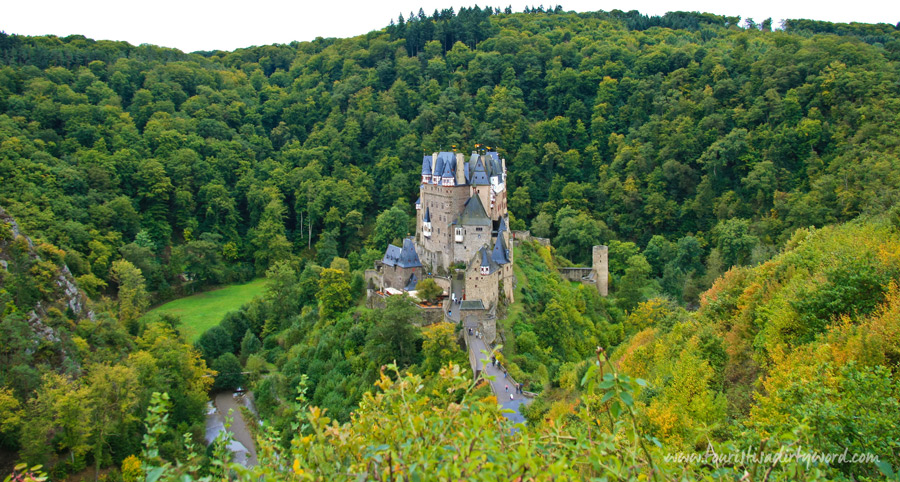
From the time we were at the top of the ramp and took our first photos of the castle nestled within its leafy valley, until we arrived at its entrance, the exterior stones of the castle had shifted its color, darker and warmer with the moisture.
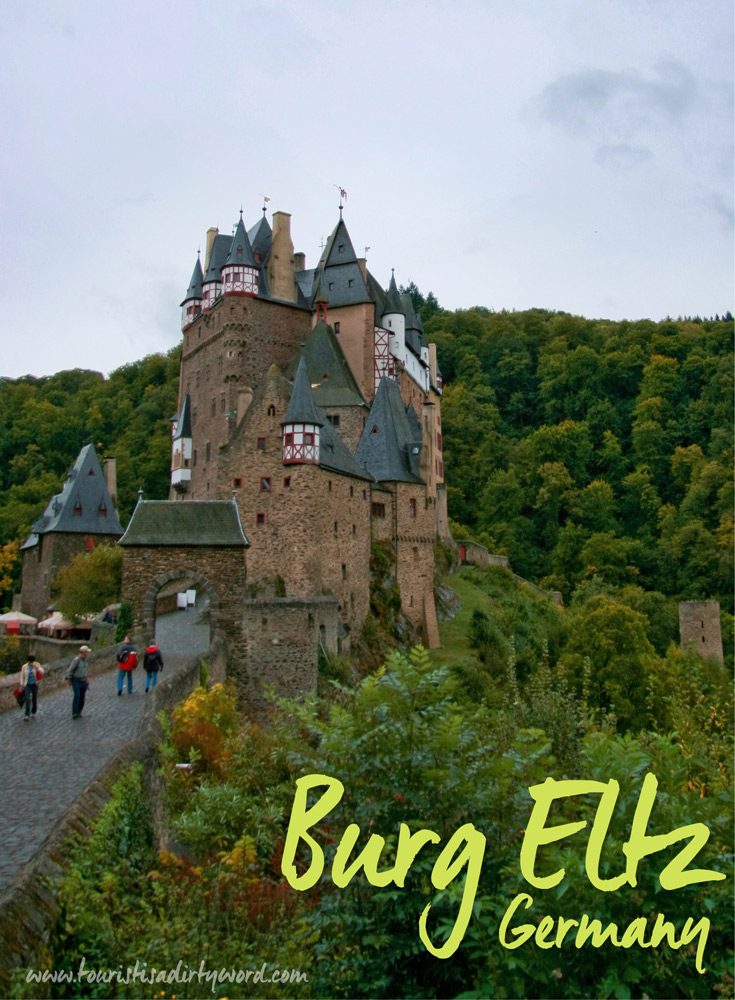
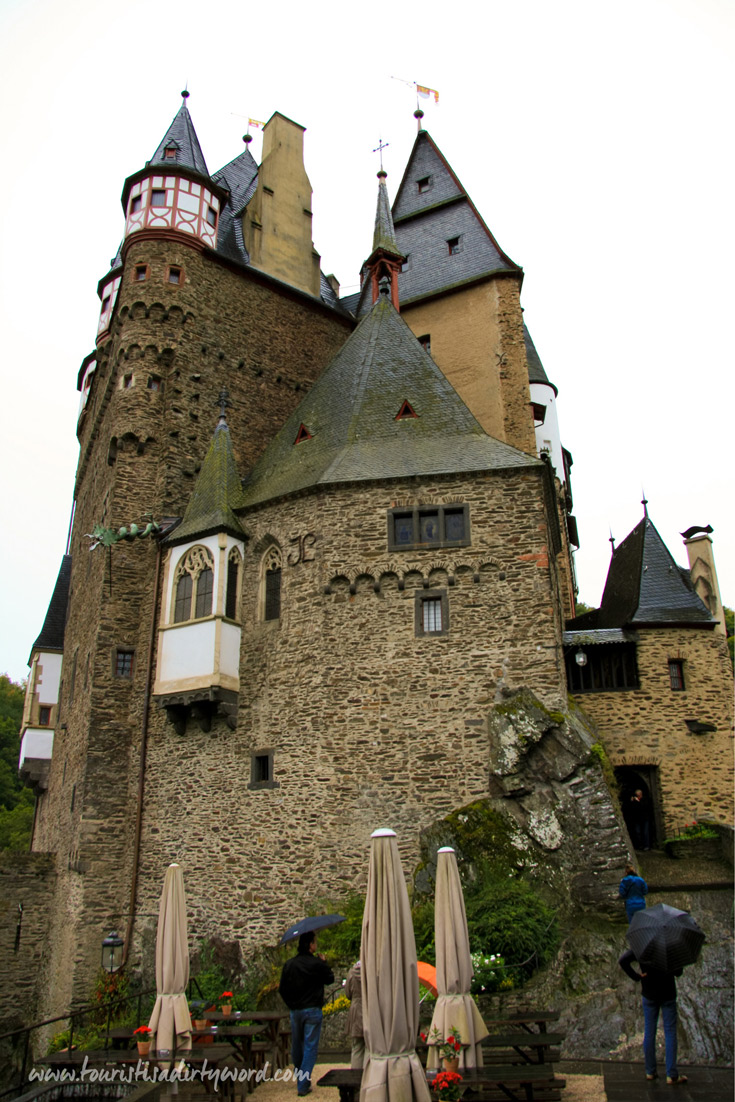
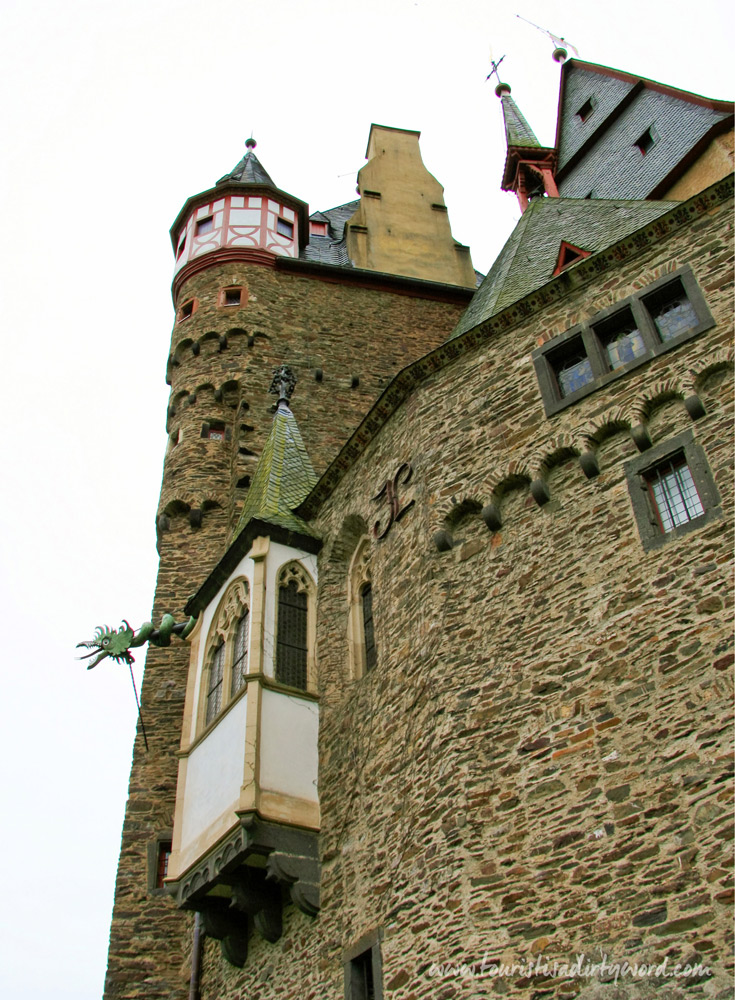
The
only way to get inside the castle if you’re not family is through a
guided tour. We waited in the castle’s courtyard and tried to stay dry.
It was only about a fifteen minute wait.
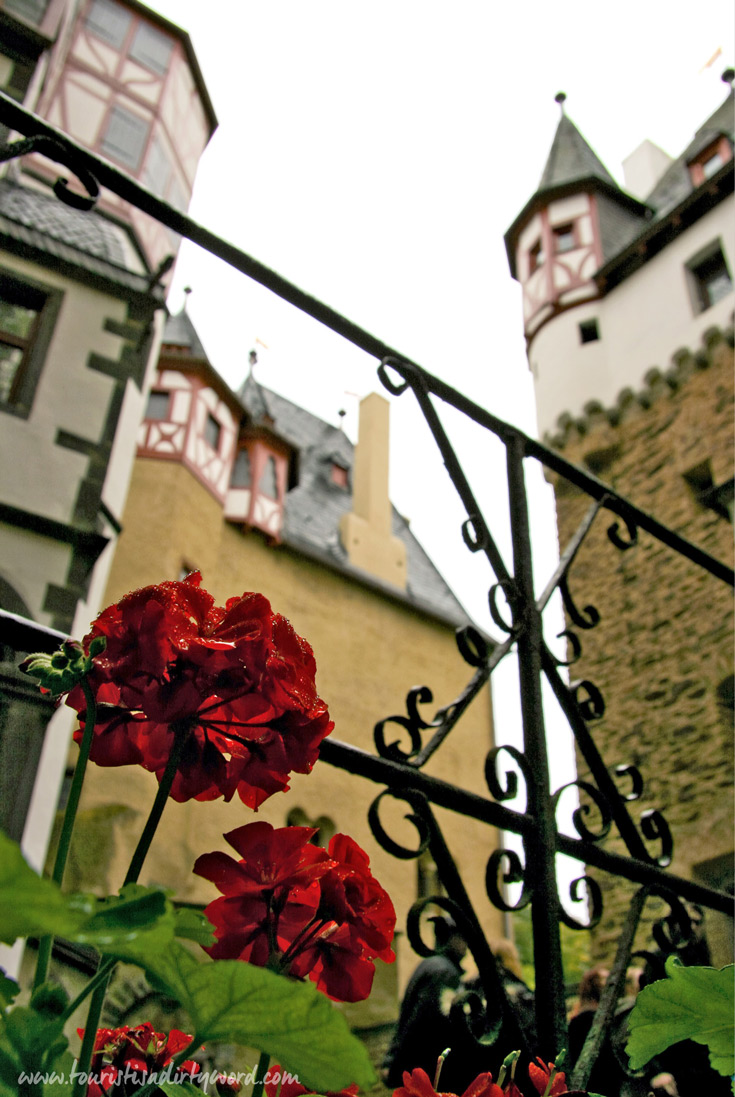
Although I’m not a fan of tour groups, if there’s no other way of getting in, by all means I’m going. I was agog at all the elaborate floor and ceiling murals, and to see the oldest surviving painted Renaissance bed from 1520. Photography of any kind is not allowed on the castle tour, however they have a wonderful website in English with beautiful photos that will more than inspire you to visit. The tour is interesting and weaves in personal histories which helps to hold my squirrel-like attention span within a group setting. You might want to familiarize yourself with the history on the castle’s website beforehand. It never hurts!
Where Neuschwanstein, the most famous of Germany’s castle, feels uninviting and sterile at times, Burg Eltz is authentic, warm, lived in and loved on. Of course it should, since it has been lived in throughout its 800-year-long history by the same family and entourage of servants. Burg Eltz has an appealing hodgepodge look resulting from its 500-years of construction showcasing every architecture style from Romanesque to Baroque swirled together.
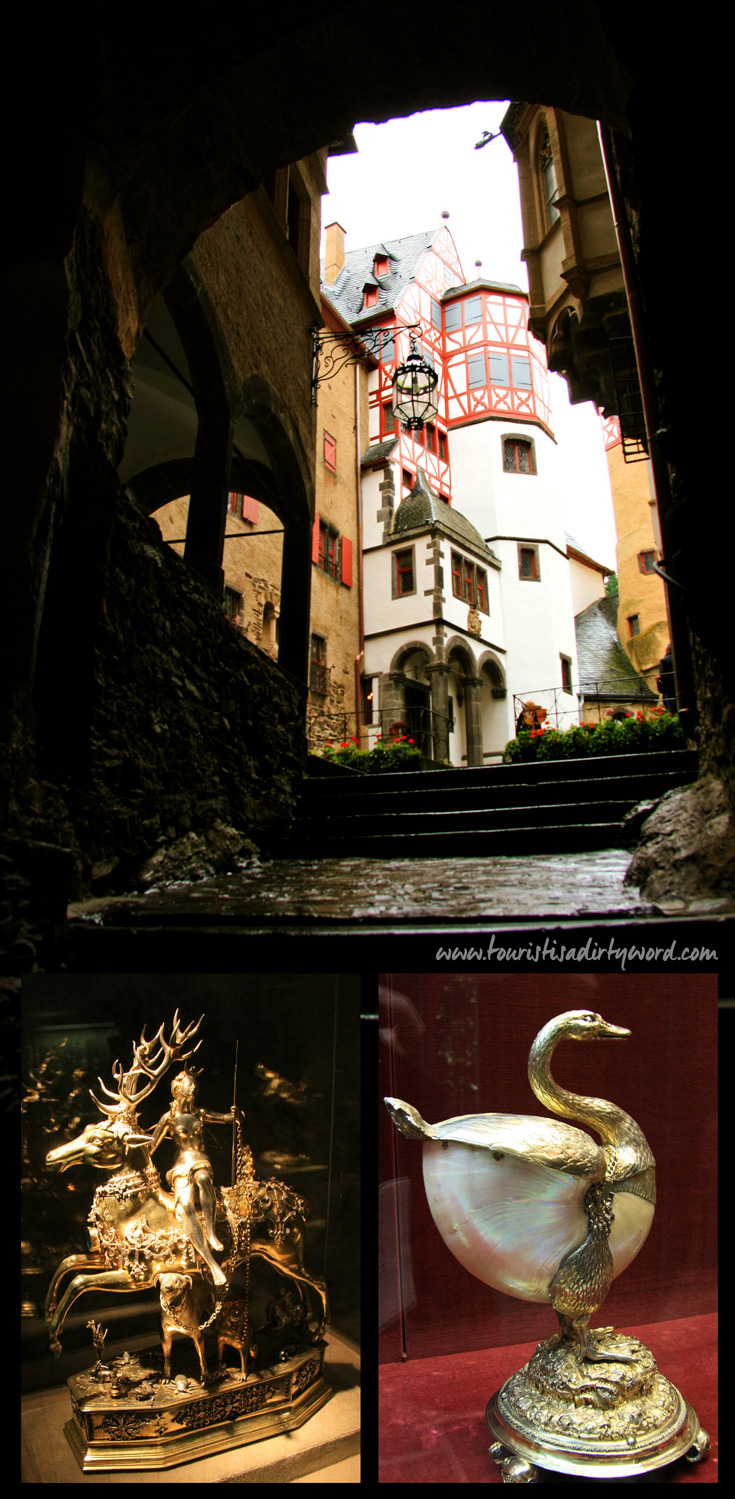
On your way out, do not miss the jewels and treasure collection! You’ll be amazed at the skill that must have gone into making the pieces on display. My favorite was a sweet duck that the artist cleverly incorporated a shell in its design.
Follow Along
If you enjoyed this article, or these topics sound interesting to you, you'll love our weekly newsletter. You'll receive a free Germany Packing list for signing up, and you'll receive each week's newest posts every Friday. Thank you for reading!

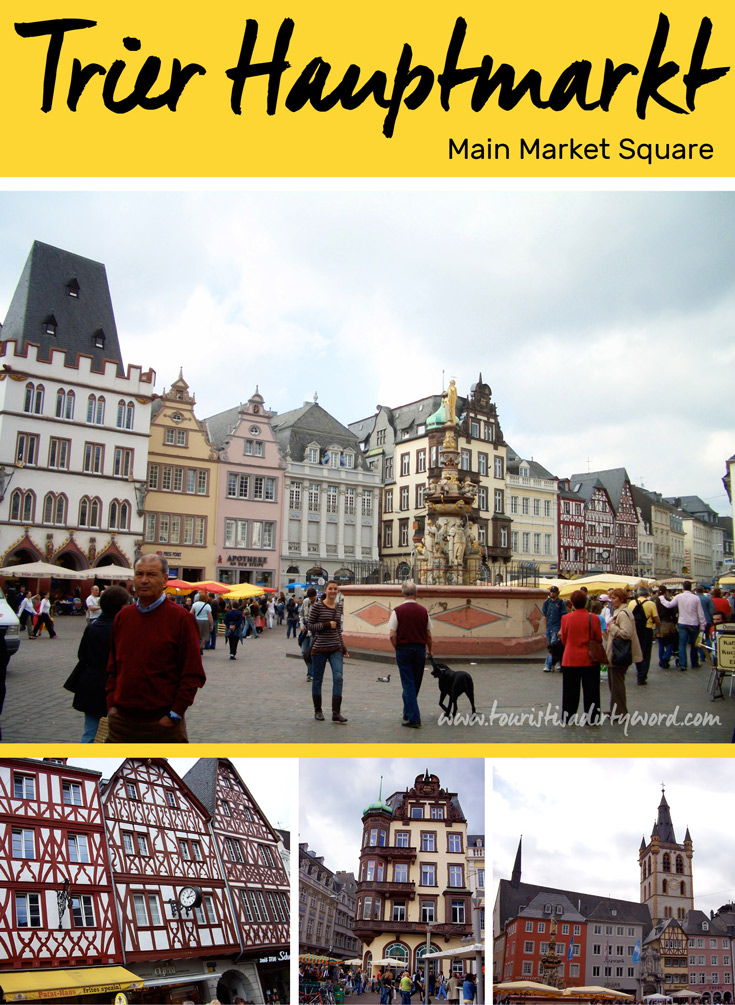
The center of Trier is dominated by a large and fascinating market square called Hauptmarkt, meaning Main Market Square. The very first market square of Trier was at the river, but in the 10th century Archbishop Heinrich I moved the main market square to its current location. In the middle ages, the market was used for trade of goods and to this day you will see many vendor booths selling fresh produce, souvenirs and flowers. The right to hold markets was also granted in the 10th century, which means the vendors at the market had to pay a fee or tax to the city in order to do business there.
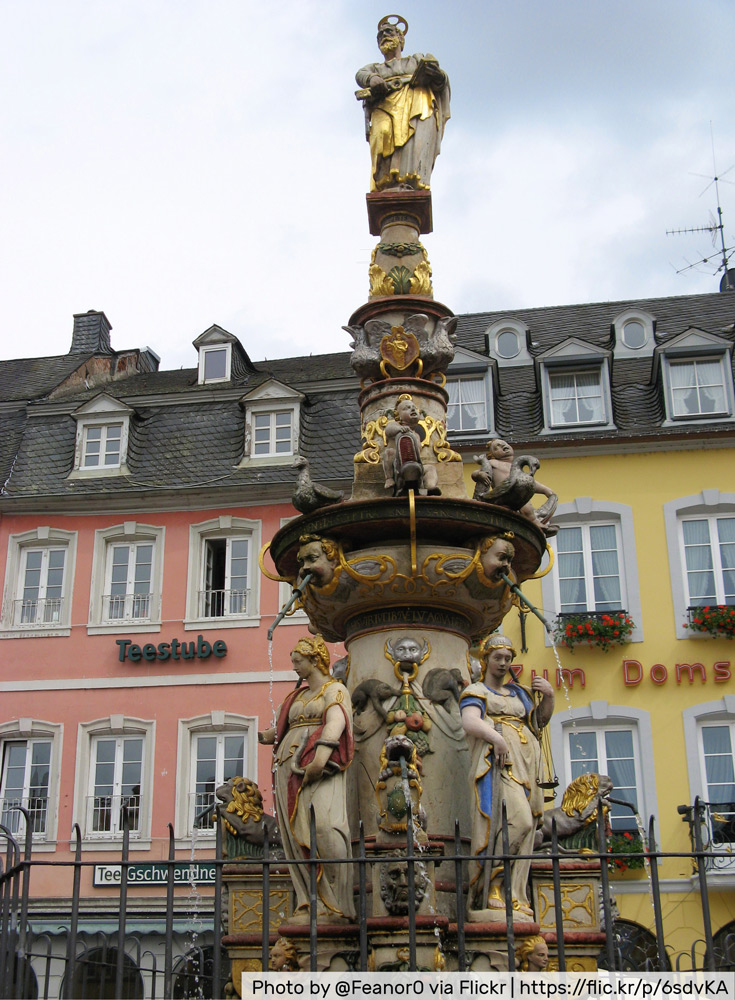
The market centers around the much decorated Petrusbrunnen (Fountain of St. Peter), which was built in 1595. It shows St. Peter, the patron saint of Trier, surrounded by the four virtues Fortitude, Justice, Prudence, and Temperance, all as female figures. In contrast, you will see monkeys and monsters portraying the vices. In between the female figures are animals such as dolphins, eagles, geese, and lions together with a coat of arms. Take your time to circle the fountain to find even more interesting elements.
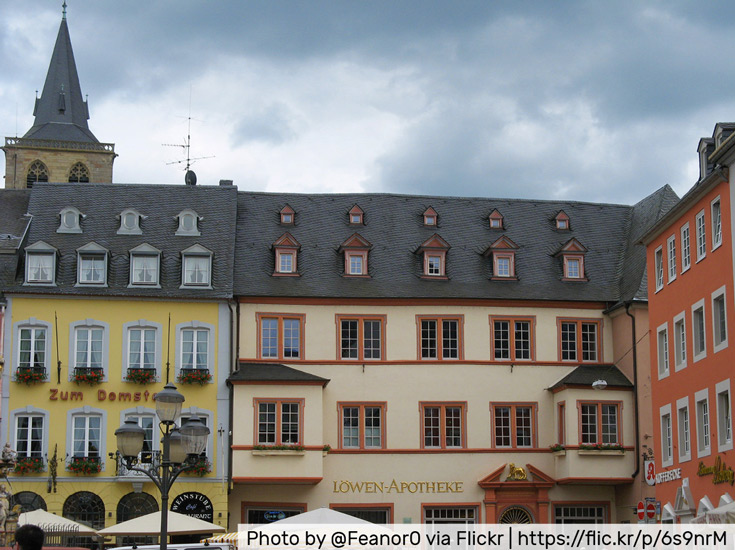
From the fountain we also spotted the Löwenapotheke (Lion’s Pharmacy), which is the oldest pharmacy in Germany - first mentioned in 1241. Across from the pharmacy is the tallest building of the market square, which is called Steipe, which means “to lean on” in the Trier dialect. The white, castellated building got its name from its short pillars on top and was originally built in 1430 (see the first picture). During WWII the Steipe was completely destroyed, but reconstructed in 1968, after a lengthy discussion of the citizens, who were trying to decide between a modern building and the reconstruction of the original Steipe building. I am glad the citizens of Trier voted for the reconstruction of the original building, it looks authentic and fits perfectly into the market picture.
On the ground level of houses on the square are restaurants, cafes and shops. It sure takes a while to get a feel for the space and to take it all in. Why not sit in one of the cafes and enjoy some German cake and coffee? This should give you some extra energy to explore the other sights of Trier.
An interesting fact about the main market square: All roads in Trier lead to the Hauptmarkt, which makes it a great place to navigate from. When you stand at the Petrusbrunnen fountain in the center, you will have the Porta Nigra to the north, the Cathedral to the east, the Kaiserthermen to the south, and the Mosel river to the west.
This was actually the first market square I have ever taken Denise to, and it is by far one of the prettiest in Germany with its colorful restored facades and old town feel. Have you been there? What was your most favorite memory of the Trier Hauptmarkt?
Follow Along
If you enjoyed this article, or these topics sound interesting to you, you'll love our weekly newsletter. You'll receive a free Germany Packing list for signing up, and you'll receive each week's newest posts every Friday. Thank you for reading!

